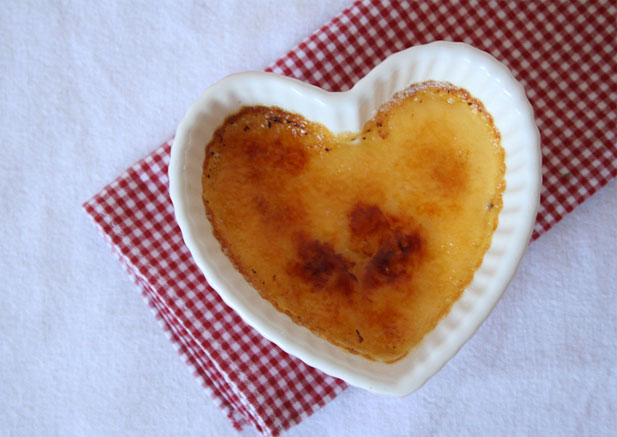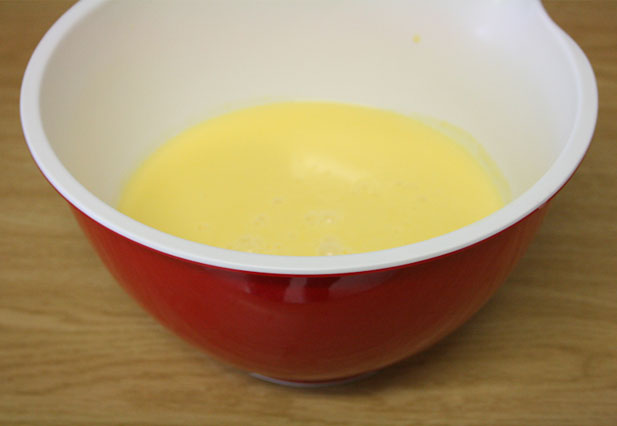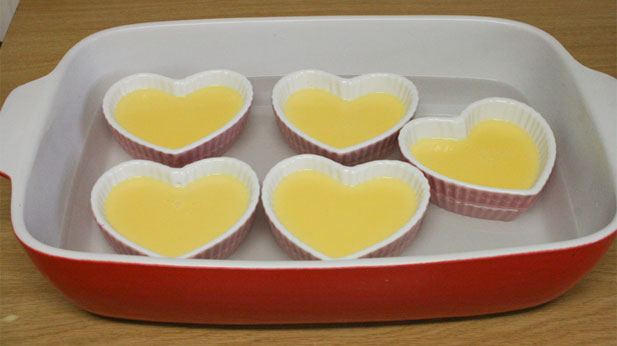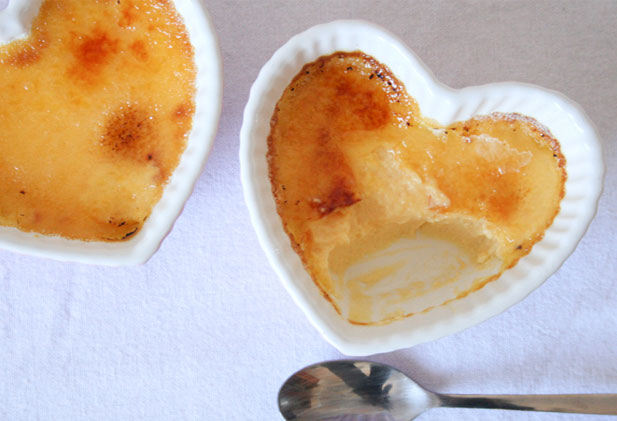The science behind crème brûlée
 The name crème brûlée translates as burnt cream, referring to the characteristic burnt sugar on top. Although notoriously difficult to get absolutely spot on, this elegant and tasty dessert is nothing more than baked custard, just like its family members pot de crème and crème caramel.
The name crème brûlée translates as burnt cream, referring to the characteristic burnt sugar on top. Although notoriously difficult to get absolutely spot on, this elegant and tasty dessert is nothing more than baked custard, just like its family members pot de crème and crème caramel.
Now I know most of you readers are long-time culinary experts but for those of us amateur chefs, a little note: custard, originally, is not in fact UltraMel. It’s a dessert sauce made by cooking milk (or cream), egg yolks and sugar together. Making it is relatively simple; the only rule is to cook it slowly over a low heat, so that the egg doesn’t scramble.
A formula of 8 egg yolks, 2 cups of dairy and 75g sugar is more or less standard for making custard. So our ingredients are:
8 large eggs, separated
75g sugar
1 cup full cream milk
1 cup cream
1/2 tsp vanilla essence
Some caster sugar for the tops
 Our method is as follows:
Our method is as follows:
1. Preheat the oven to 140℃.
2. Set aside six ramekins in a roasting tray.
3. Now you need to construct a double boiler – I use my KitchenAid mixing bowl on top of a saucepan of boiling water. You can remove the mixing bowl from the double boiler for now, and place it on the counter. In the mixing bowl, whisk the egg yolks and sugar together for about a minute, so the mixture is pale and fluffy.
4. Heat the milk, cream and vanilla in another saucepan until the mixture starts to boil. Remove from the heat and let it cool for a minute or two.
5. Slowly add the dairy mixture to the egg mixture, while stirring continuously.
NOTE: If you add the dairy too quickly, or if you forget to stir, the eggs have a good chance of scrambling and since we are making dessert and not breakfast, we want to avoid that.
6. Now it’s time to use the double boiler. Place the mixing bowl on top of the double boiler and heat the custard for about 5 minutes, stirring continuously.
7. Strain the custard, using a sieve, to ensure that it is absolutely smooth.
 8. Your moment has arrived – you can now pour the custard into the ramekins! You can fill them right to the top.
8. Your moment has arrived – you can now pour the custard into the ramekins! You can fill them right to the top.
9. Fill the roasting tray with water, about halfway up the ramekins.
NOTE: Custard is cooked in a water bath (or bain-marie – the fancy French name), to ensure slow cooking and even distribution of heat. In this way, you can prevent the custard from burning and/or curdling.
 10. Cook for 30 to 45 minutes – the test for crème brûlée is that the mixture has set but is still slightly wobbly in the centre.
10. Cook for 30 to 45 minutes – the test for crème brûlée is that the mixture has set but is still slightly wobbly in the centre.
11. Let the ramekins cool, then wrap them in cling wrap and refrigerate for an hour, or up to 24 hours if need be. The cling wrap will prevent a film forming on top of the custard.
12. When you are ready to serve your crème brûlées, sprinkle an even layer of caster sugar over the top (roughly a teaspoon each), and caramelise them under a very hot grill or by using a blowtorch. The tops should start to turn slightly brown, but not too dark.
Your desserts are ready to be enjoyed!
 For variation, you can add any of the following to your custard mixture before baking: finely grated chocolate, brandy, espresso powder, liqueur (such as amaretto), lime, or lemon verbena.
For variation, you can add any of the following to your custard mixture before baking: finely grated chocolate, brandy, espresso powder, liqueur (such as amaretto), lime, or lemon verbena.
Start sending out those dinner party invitations, and get ready to show off some beautiful crème brûlées.
More in the Science Behind series:
The science behind pavlova
The science behind fudge
The science behind chocolate chip cookies
The science behind cupcakes
The science behind nougat
